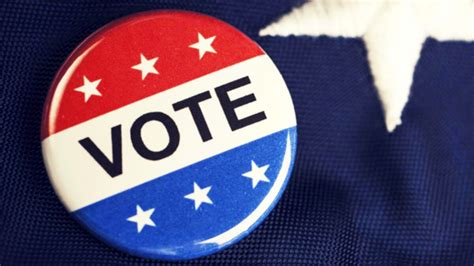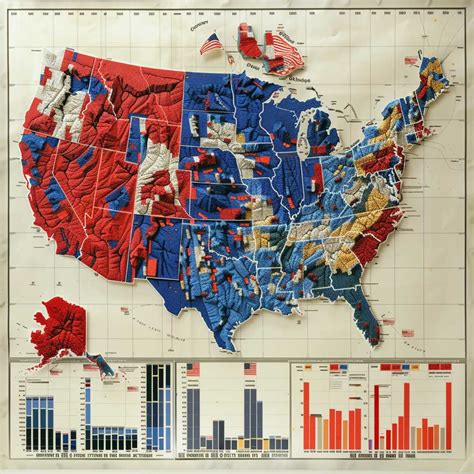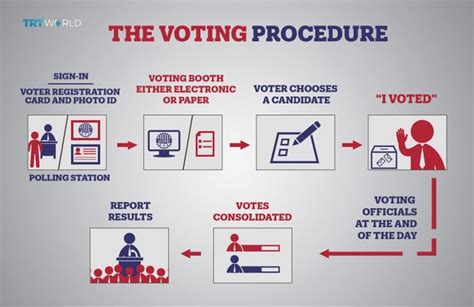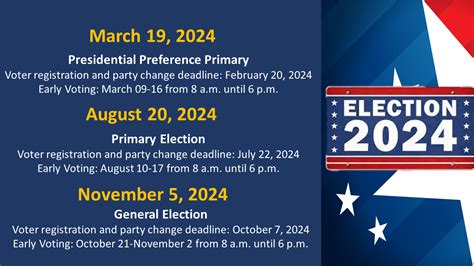Explore the importance of understanding voting for democracy, key preparation steps, methods, challenges, and post-voting insights for a smooth voting experience.As voting day approaches, understanding the ins and outs of the electoral process is essential not only for making your voice heard but also for fostering a healthy democracy. With various voting methods available—whether you choose to vote in person, mail in your ballot, or participate in early voting—being well-prepared can significantly enhance your voting experience. This guide will walk you through the importance of understanding voting, essential steps to ensure a smooth process, common challenges that may arise on voting day, and how to navigate them effectively. Additionally, we’ll demystify the post-voting landscape, providing clarity on election results and their implications. Empowering yourself with this knowledge will help you engage more fully in the democratic process—so let’s get started!
The Importance Of Understanding Voting For Democracy
Understanding voting is crucial for the health of a democracy. It empowers citizens to evaluate candidates, policies, and platforms, enabling informed decisions that affect governance and community welfare. The act of voting is not just a right but a responsibility that ensures that the voice of the populace is reflected in government. This engagement fosters accountability among elected officials, as they are aware that their positions depend on the electorate’s confidence and support.
Moreover, when individuals understand voting, they are more likely to participate in elections, which leads to higher voter turnout. High participation rates contribute to a more representative electoral outcome, aligning closely with the true will of the people. Conversely, low turnout can skew results, leading to governance that may not truly represent the interests or desires of the population.
In addition, understanding voting contributes to civic education, as informed voters tend to engage more deeply with their communities. They are more likely to participate in discussions, advocate for issues they care about, and drive social change through their understanding of how political systems operate. This ultimately strengthens the democratic fabric of society, encouraging a culture of participation and engagement.
A thorough grasp of voting procedures, including registration, the voting process, and the electoral system, helps to reduce misinformation. In an era where false information can spread rapidly, informed voters are less susceptible to manipulation and are equipped to challenge inaccuracies, contributing to a healthier, more robust democracy.
Key Preparation Steps For A Smooth Voting Day Experience
Preparing for voting day is crucial to ensure that you can participate in the electoral process without any unexpected issues. Here are some key steps to consider:
- Check Your Registration Status: Make sure you are registered to vote. You can verify your registration status online through your state’s election website. This step is vital to avoid any last-minute surprises on voting day.
- Know Your Voting Method: Familiarize yourself with the voting method you plan to use, whether it’s in-person, mail-in, or early voting. Each method has different procedures, and understanding them will help ensure a smooth experience.
- Review the Ballot: Before you head to the polls, take the time to review your ballot. Research candidates, measures, and propositions to make informed choices. Many states provide sample ballots online.
- Plan Your Voting Time: Choose a specific time on voting day to cast your ballot and stick to that schedule. Consider voting during early hours or during off-peak times to avoid long lines.
- Gather Necessary Identification: Some states require voters to present identification at the polls. Check your state’s ID requirements and ensure you have the necessary documents ready.
- Prepare for Transportation: Plan how you will get to your polling place. If you need a ride, arrange it ahead of time, and factor in travel time to ensure you arrive before the polls close.
- Stay Updated on Local Voting Regulations: Be aware of any changes in voting rules or procedures in your area. Local election offices often provide updates on their websites or through social media.
- Help Others Prepare: Encourage friends and family to prepare as well. Sharing information about the voting process can help ensure that everyone knows what to expect on voting day.
By taking these preparatory steps, you can enhance your understanding of voting and increase the likelihood of a smooth voting day experience. Remember, being prepared is key to participating fully in our democratic process.
Understanding Voting Methods: In-Person, Mail-In, And Early Voting
When it comes to understanding voting, knowing the different methods available is crucial for making an informed decision and ensuring your voice is heard. Each method serves varied needs and preferences, thus it’s essential to weigh the options effectively.
The three primary methods for voting are: in-person voting, mail-in voting, and early voting. Here’s a detailed look at each:
In-Person Voting
In-person voting is the traditional and most familiar method. Voters cast their votes at designated polling places on Election Day. This method allows for immediate feedback regarding one’s ballot and provides voters with the opportunity to ask questions if they have any uncertainties.
Mail-In Voting
Mail-in voting, often referred to as absentee voting, enables voters to receive and return their ballots through the mail. This method is crucial for those unable to vote in person due to various reasons such as health issues, travel, or scheduling conflicts. It’s important to be aware of deadlines for requesting and submitting mail-in ballots to ensure that your vote is counted.
Early Voting
Early voting allows voters to cast their ballots before the official Election Day. This method provides flexibility and convenience, making it easier for those with tight schedules on Election Day to participate. Early voting locations may differ from traditional polling places, and it’s advisable for voters to check the regulations in their area.
Regardless of the chosen method, having a clear understanding of these options is vital in enhancing voter participation and maintaining the integrity of the electoral process. Being aware of the advantages and disadvantages of each method will empower voters to make the most appropriate choice tailored to their circumstances. Ultimately, the goal of understanding voting methods is to facilitate a smoother and more accessible voting experience for everyone.
Common Challenges On Voting Day And How To Overcome Them
Voting Day can be a confusing and stressful time for many individuals. Understanding voting is crucial for making the process smoother, but there are common challenges that voters face, which can hinder their ability to cast their ballots. Here are some of the typical issues that arise on Voting Day and tips on how to address them:
- Long Lines: One of the most frequent complaints about Voting Day is the long wait times at polling places. To overcome this, arrive early in the morning or during non-peak hours. If possible, check your local voting schedule to find the best times to vote.
- Polling Place Confusion: Voters may find themselves at the wrong polling location. It’s essential to verify your polling place ahead of time through your local election office or online resources. Bring identification if required.
- Technical Issues: Some voters may encounter problems with voting machines. Familiarize yourself with the equipment before voting day, and don’t hesitate to ask a poll worker for assistance if you face technical glitches.
- Documentation Issues: Certain states require identification or voter registration confirmation to vote. Always check your state’s regulations beforehand and ensure you have the necessary documents ready on Voting Day.
- Legal Questions: Voters may have legal concerns regarding their voting rights or face challenges over their registration status. Know your rights and the contact information for legal assistance in case these issues arise.
- Feeling Unprepared: Voters who haven’t researched candidates or measures might feel overwhelmed. Take time to review sample ballots and research before Voting Day to feel more confident in your choices.
By anticipating these challenges and preparing accordingly, you can help ensure a successful and positive experience when casting your vote. Understanding voting is essential not just for yourself but also for encouraging friends and family to do the same, fostering a more engaged and informed electorate.
Post-Voting: Understanding Voting Results And Their Implications
After casting your vote, the anticipation for results can be both exciting and anxiety-provoking. Understanding how the voting results are determined and what they signify for your community and the country is crucial in the democratic process.
Once polls close, votes are counted, and preliminary results begin to emerge. These results are typically shared via various media channels, and it’s essential to approach them with a critical lens. Understanding voting results involves recognizing that initial counts may not reflect the final outcome due to outstanding mail-in ballots and provisional votes that take time to tally.
When reviewing the results, consider the following aspects:
It’s also vital to be aware of the political climate and context surrounding the election. Events that occur post-election, such as recounts, legal challenges, or calls for investigations, may all impact the legitimacy of the vote and its outcomes.
understanding voting results is not just about numbers; it’s about grasping their real-life implications for governance and civic life. Engaged citizens can use these insights to advocate for their communities and hold elected officials accountable, thus playing an active role in the democratic process.
Frequently Asked Questions
What is Voting Day?
Voting Day, often referred to as Election Day, is the designated day on which eligible citizens can cast their votes for various elections, including local, state, and federal offices.
When is Voting Day usually held?
Voting Day is typically held on the first Tuesday after the first Monday in November in the United States, although this can vary depending on the type of election and local regulations.
What do I need to do before Voting Day?
Before Voting Day, you should ensure that you are registered to vote, know your polling location, review the ballot, and understand the candidates and measures that will be on your ballot.
How can I find my polling place?
You can find your polling place by checking your state’s election office website, looking up your voter registration information, or using resources like CanIVote.org.
What types of ID might I need to bring?
The identification required to vote varies by state. Some states require a photo ID, while others may accept a utility bill or bank statement with your name and address. Always check your state’s requirements prior to Voting Day.
Can I vote early or by mail?
Yes, many states offer early voting and mail-in ballots (absentee voting) to allow individuals to cast their votes before Voting Day or to vote without going to a polling location.
What should I do if I encounter problems while voting?
If you encounter any issues while voting, such as being at the wrong polling place or facing challenges with your registration, you can contact a poll worker for assistance or reach out to organizations like the Election Protection Hotline.









